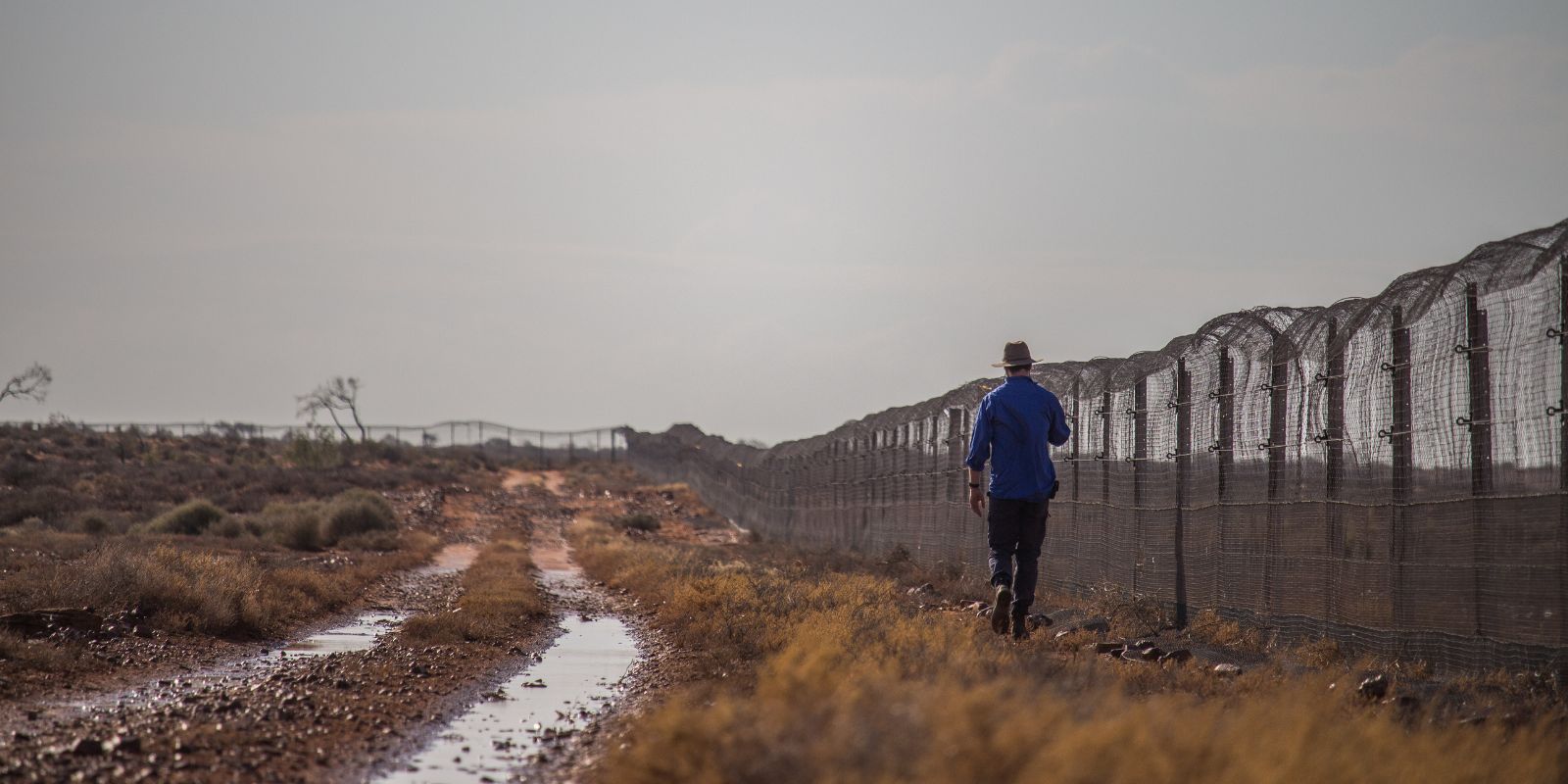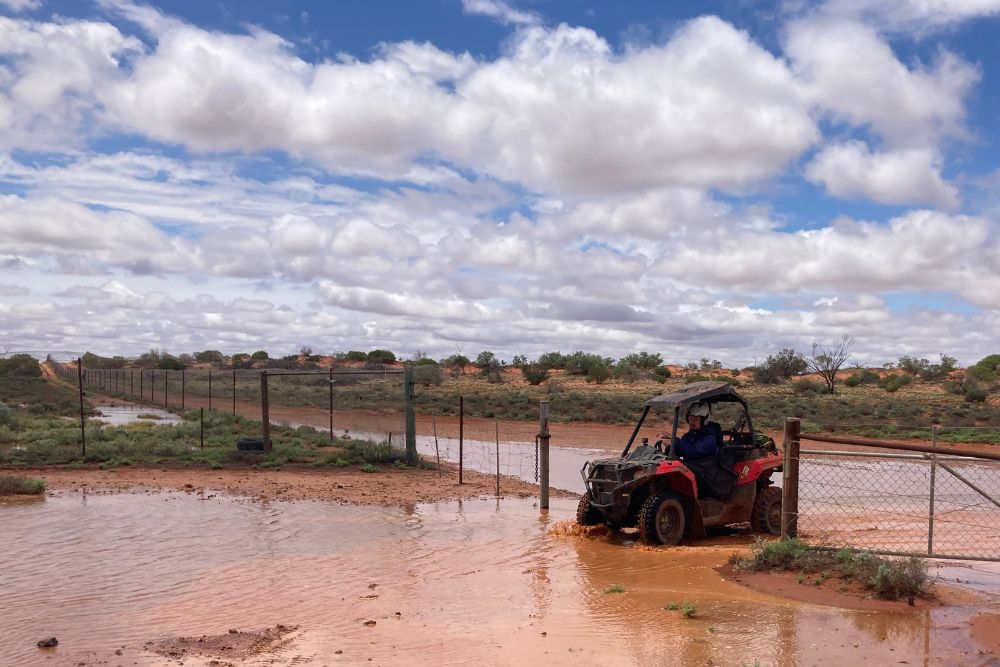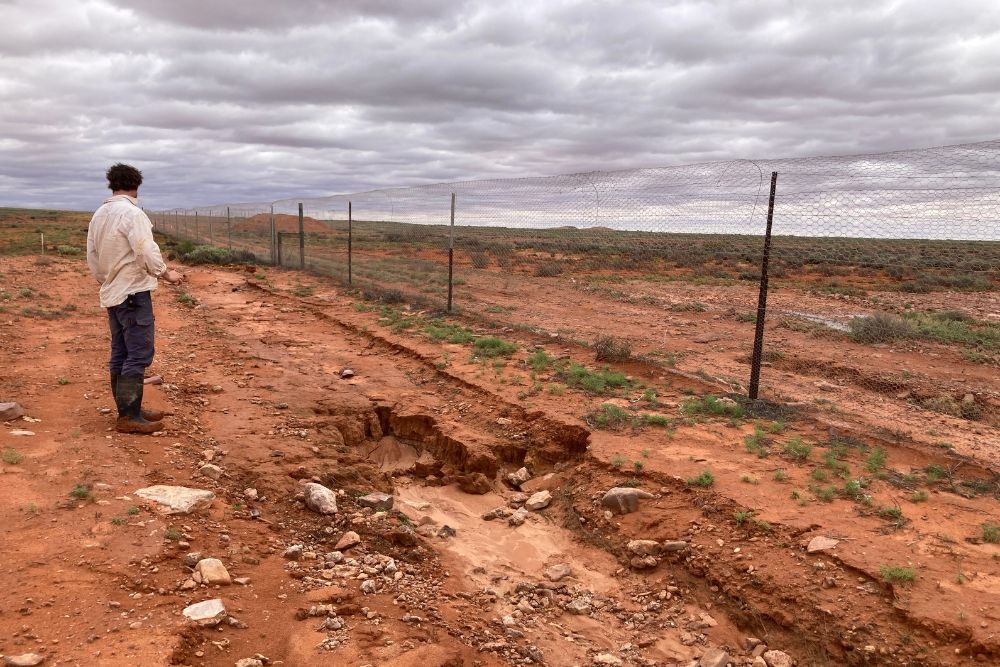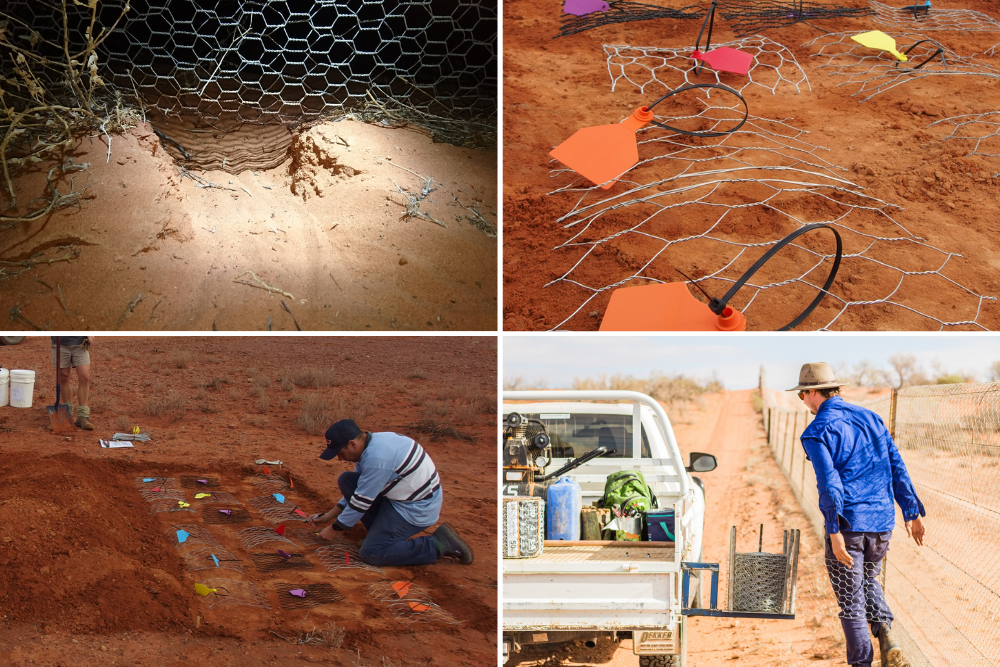The fence that makes the science possible
Arid Recovery
28 October 2025

At Arid Recovery, the fight to protect endangered wildlife relies on a 1.8-m tall floppy top fence - our home-grown innovation that keeps predators out and science moving forward. Invented at Arid Recovery and now used across Australia, the fence is constantly tested by rust, wind, and time. Maintaining it is tough and costly, but vital: without it, there would be no safe haven for wildlife and no long-term research to guide conservation efforts.
The only thing standing between cats, foxes, and rabbits and our reintroduced native wildlife is a 1.8-metre floppy-top fence. It might not look like much, but this specially designed fence has become one of the most important conservation tools in the fight to protect Australia’s threatened mammals. Today, 23 reserves across the country use the floppy-top design, which makes up 86% of Australia’s safe-haven network.
The fenced design was developed right here at Arid Recovery by co-founders Dr Katherine Moseby and Dr John Read. The original fence was perfected through trial and error. Researchers released feral cats into test enclosures with different fence designs, observing their escape attempts until the ideal combination of features was found. Once cat-proof, the Arid Recovery fence became a blueprint for sanctuaries across Australia.
The final design we use today combines several clever features: a buried skirt to stop rabbits and foxes digging under, a floppy overhang that prevents cats from climbing over by exploiting their loss of grip on unstable surfaces, and electric hot wires that deter any would-be invaders. Even the mesh has evolved. The first design used 40 mm “rabbit-proof” netting on the lower half of the fence, but early trials showed that baby rabbits could still slip through. Reducing this mesh to 30 mm made the fence truly rabbit, cat and fox proof.
.jpg)
.jpg?lang=en-AU)
The floppy top fence is a simple, but effective design
Maintenance that never stops
A fence is only as good as the effort put into maintaining it. Arid Recovery’s Conservation Land Management Officer, Nathan Manders, checks 80 km of fencing every week, inspecting for holes, wobbly posts, misshapen floppy tops, erosion issues and testing the electric wires. Nathan explains, " if everything goes smoothly, it can take up to six hours, but if it has been raining and the tracks anre boggy, we have to setich to the ATV. Depending on how much rain we have had, it can sometimes take a couple of days."
Each check involves a long list of potential problems. Nathan looks for breaches caused by animals digging in or out, holes made by kangaroos colliding with the fence, and faults in the electric wires, which is often caused by debris and wind. He also keeps an eye on the floppy top to ensure it’s still flopping the right way after high winds, and monitors the height of the fence as shifting sand dunes slowly bury sections. “It’s an old fence — nearly 30 years in parts,” he says. “Things erode quickly here, so we’re constantly watching for corrosion in droppers and strainers.”
The desert’s extreme conditions don’t make things easy.
The wind comes in strong across the open gibber plains, testing the fence’s strength. To counter this, fence posts have been reinforced, and in the northernmost paddock, Field Officer Jonah has welded additional structure to prevent the floppy top from being blown inward. Even so, after every strong wind, the team is out checking that the fence is still standing and the floppy top flops on the outside.
Rainfall is always welcome, bringing the desert to life - but it also makes the fence vulnerable. Flooded or softened ground can cause the fence to collapse, opening the way for rabbit, cat or fox incursion. Sections of track can wash away, cutting off access to parts of the reserve for days or even weeks at a time. During these times, Nathan stays onsite, repairing damage and monitoring the fence, navigating the soggy terrain with ATVs and sending drones to inspect areas that are too boggy or remote to reach safely.


Fence repairs are done on ATVs during wet weather
Nathan inspects the erosion damage after a storm.More than 10% of Arid Recovery’s annual budget goes toward fence maintenance and replacement. Last year alone, 7 km of foot-netting had to be replaced, as well as rasing sections and replacing electric lines. “It’s a bit of a never-ending job,” Nathan admits. "But I couldn’t do it alone — staff and volunteers have built and maintained so much of this fence. It really is a team effort.” Without Nathan’s dedicated efforts and our ongoing investment, the fence would deteriorate faster, and the safe haven for our threatened species would no longer be secure.
Science behind the fence
The fence rusts quickly. To make the it last longer, Arid Recovery has teamed up with the University of Adelaide and Waratah Fencing to understand why some sections deteriorate faster than others.
Soil testing along the fence line identified six distinct soil types, all alkaline, with salinity levels ranging from non-saline to highly saline. Test sheets of aluminium fencing with different zinc coatings were buried along the fence and examined after 9 and 18 months to measure corrosion rates.
The results are helping us choose materials more suited to local conditions and prioritise replacing of the sections of fence most at risk of corrosion. Fencing is now being retrofitted based on soil risk, with stainless steel in used in high-risk zones, while trials of PVC netting and alternative fence posts. Nathan explains that “the soil-science research and new materials testing will hopefully make those periods between replacements longer".


The fence rusts and holes form quickly (top left), therefore different fencing materials were tested in the soil for 18 months (top right, bottom left). As a result we are now retrofitting fencing based on the results (bottom right).
What the fence means for research conservation
At Arid Recovery, ecological restoration is a long-term effort. It has taken 28 years to see some small mammal species return and thrive again. We’re excited to see what the next 28 years could bring and to learn the lessons they hold for conservation.
All of our research and monitoring depend on the dedication of our staff, their day-to-day management of the Reserve, and on the fence itself. Without it, there would be no safe haven for wildlife and no living laboratory for conservation science.
The future of Arid Recovery depends on one simple thing:
The fence holding strong.